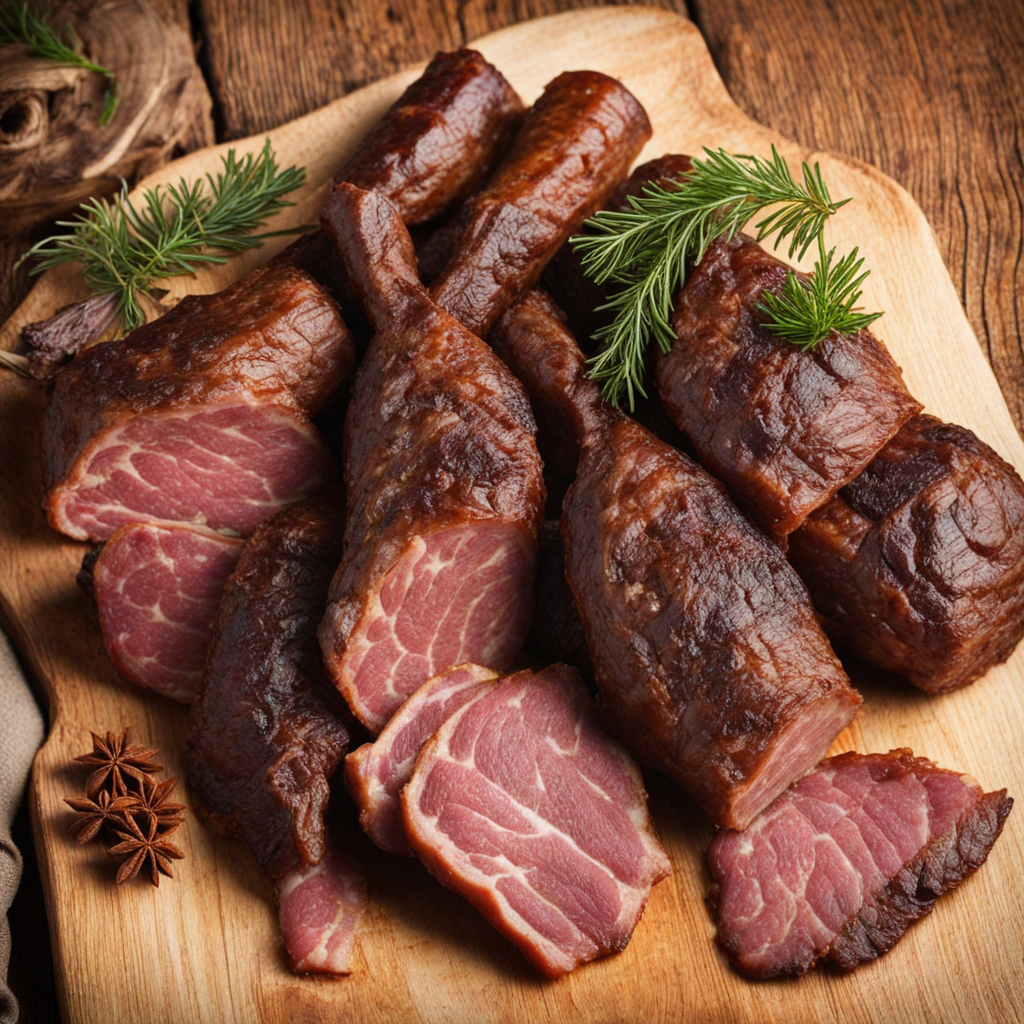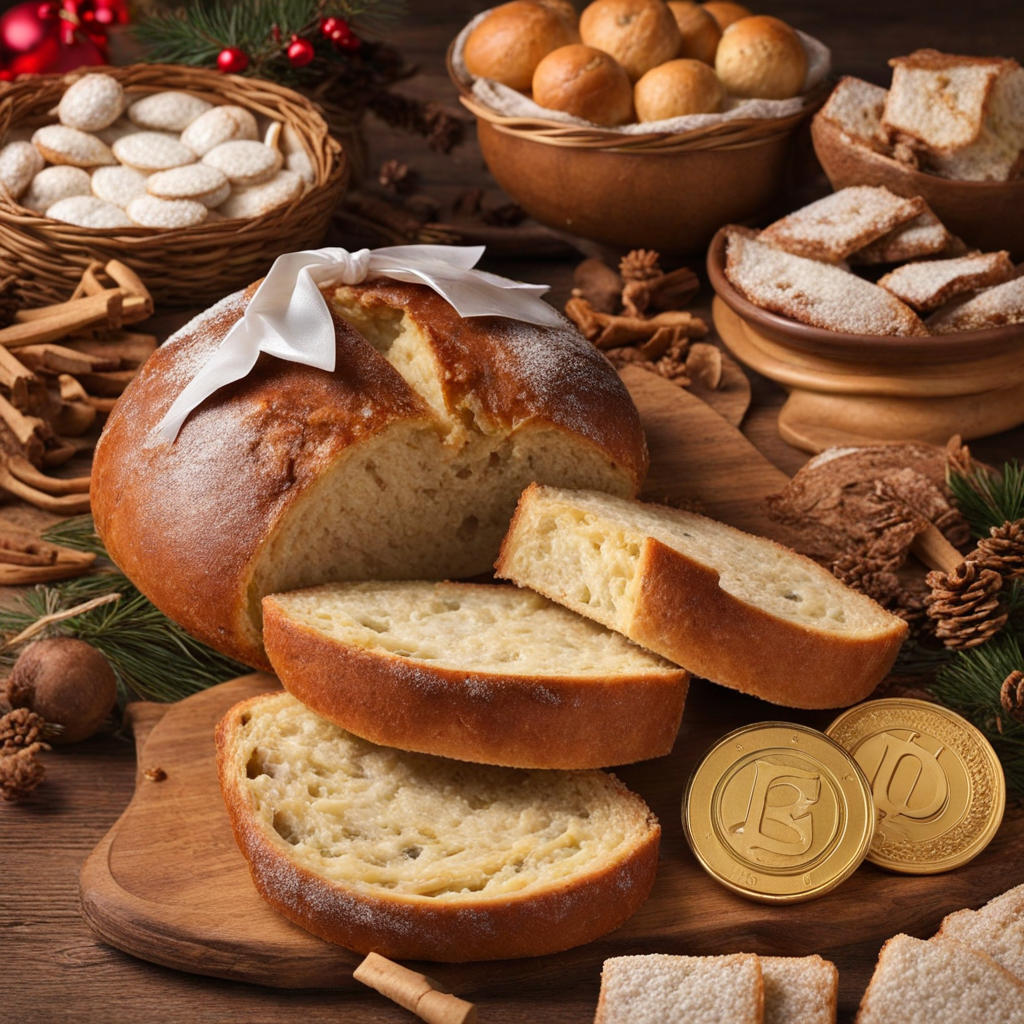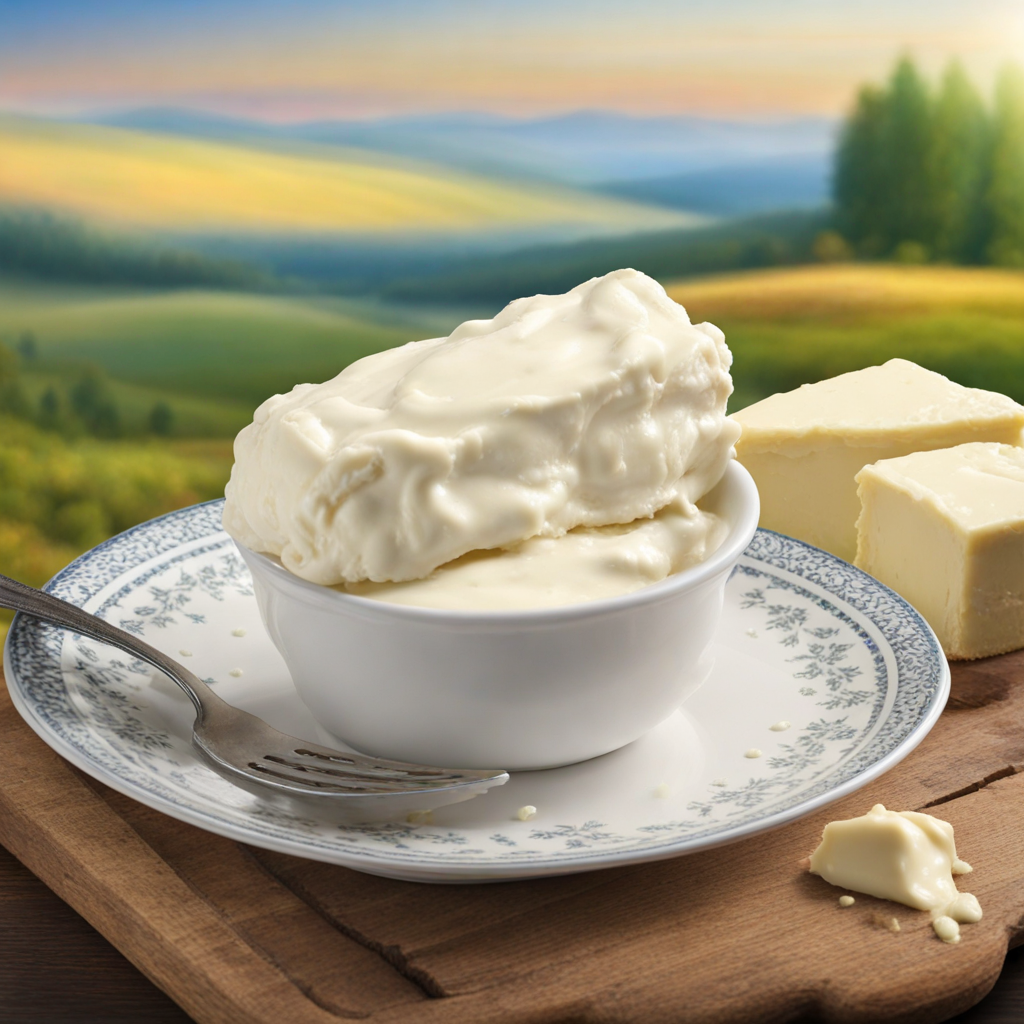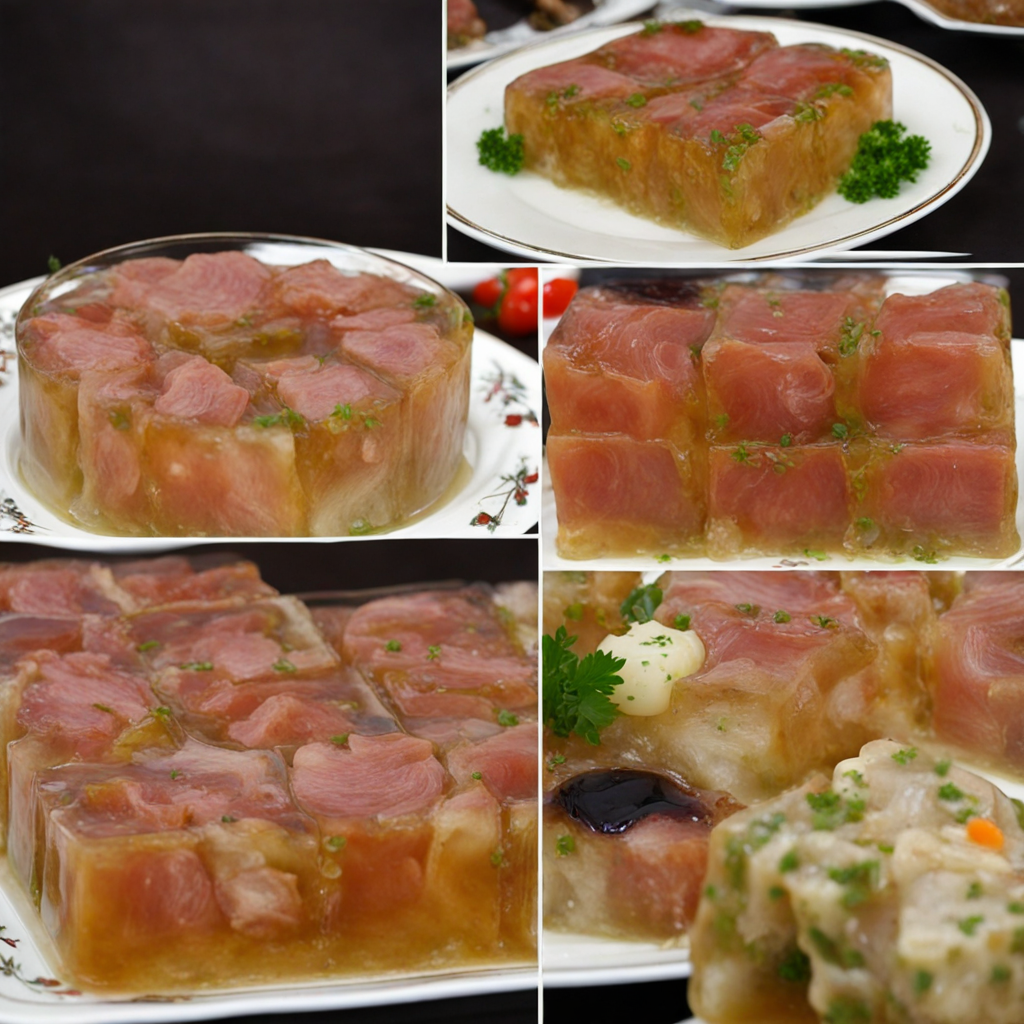Lovacka Pecenica
Lovacka Pecenica is a traditional Serbian dish that embodies the rich flavors and hearty ingredients typical of Balkan cuisine. This savory delicacy is essentially a type of smoked, cured meat, usually made from pork, that is seasoned with a harmonious blend of spices such as garlic, pepper, and paprika. The meat is meticulously prepared, often marinated for several days to allow the flavors to fully develop, and then smoked over a wood fire, giving it a distinct aroma and depth of flavor. The result is a tender, juicy cut with a beautiful balance of smokiness and spice, making it a beloved staple in many Serbian households. Served hot or cold, Lovacka Pecenica is incredibly versatile and can be enjoyed in various ways. It is often sliced thin and paired with freshly baked bread, pickles, and a side of creamy cheese for a delightful charcuterie-style plate. Alternatively, it can be incorporated into hearty stews or grilled dishes, where its robust flavor enhances the overall taste. Many also enjoy it as part of a traditional Serbian feast, where it is presented alongside other cured meats, cheeses, and seasonal vegetables, showcasing the country's rich culinary heritage. The experience of savoring Lovacka Pecenica goes beyond just the taste; it’s about the warmth and hospitality of Serbian culture. This dish often brings families and friends together during celebrations and gatherings, reflecting the communal spirit of sharing good food. Whether enjoyed during a festive occasion or as a comforting meal at home, Lovacka Pecenica offers a delightful journey into the heart of Serbian cuisine, inviting adventurous eaters to explore its unique flavors and traditions.
How It Became This Dish
The History of Ловачка печеница: A Serbian Culinary Tradition The rich tapestry of Serbian cuisine is woven with threads of regional diversity, historical influences, and cultural significance, among which Ловачка печеница (Lovačka pečenica) stands out as a cherished delicacy. This traditional dish embodies not only the flavors of Serbia but also the spirit of its people and their connection to nature, hunting, and communal gatherings. The story of Ловачка печеница is one that reflects the agricultural practices, social customs, and historical narratives of the Serbian people. Origins and Ingredients Ловачка печеница, which translates to "hunter's roast," finds its roots in the rural landscapes and hunting traditions of Serbia. The dish is typically made from pork, specifically the shoulder or belly cuts, which are marinated in a mixture of spices and herbs, then slowly roasted or smoked. Key ingredients often include garlic, paprika, black pepper, and salt, which reflect the flavors of the Balkan region. The use of smoked meat is not only a culinary choice but also a preservation method that dates back centuries, when refrigeration was not available. The origins of Ловачка печеница can be traced back to the lives of Serbian hunters and farmers who relied on the land for sustenance. The practice of hunting wild game, particularly in the dense forests of Serbia, created a cultural connection to the land and its resources. It is believed that Ловачка печеница emerged as a way to utilize the surplus of meat from successful hunts, turning it into a flavorful and satisfying dish that could be enjoyed by families and communities. Cultural Significance Ловачка печеница is more than just a meal; it is a symbol of Serbian hospitality and tradition. In Serbia, food is deeply intertwined with social gatherings, celebrations, and family bonds. The preparation and sharing of Ловачка печеница often accompany festive occasions, such as family reunions, holidays, and hunting expeditions. It serves as a centerpiece during gatherings, bringing people together around the table. The communal aspect of Ловачка печеница is significant. Families often prepare the dish collectively, with each member contributing their skills and knowledge of traditional cooking methods. This practice fosters a sense of unity and continuity, passing down culinary knowledge from one generation to the next. The dish is also representative of Serbian identity, as it is often associated with the rustic lifestyle and the pride of the Serbian countryside. Moreover, the dish is closely tied to the cultural practice of "slava," a Serbian Orthodox tradition celebrating the patron saint of a family. During slava, families prepare and serve Ловачка печеница as part of a larger feast, reinforcing the dish's role in religious and cultural observance. The ritual of sharing food during slava emphasizes gratitude, faith, and the importance of community connections. Historical Development The historical development of Ловачка печеница reflects the broader changes in Serbian society and cuisine over time. In the medieval period, Serbian cuisine was influenced by various cultures, including the Byzantine, Ottoman, and Austro-Hungarian empires. This interplay of culinary traditions led to the incorporation of new spices, cooking techniques, and ingredients into Serbian dishes, including Ловачка печеница. The Ottoman Empire's long-standing presence in the Balkans introduced new flavors and cooking methods, such as the use of spices and marination techniques that enhanced the taste of meat dishes. These influences can be seen in the seasoning of Ловачка печеница, which often includes ingredients like garlic and pepper. As Serbia transitioned through different political and cultural landscapes, the dish adapted while retaining its essential characteristics. In the 20th century, the rise of industrialization and urbanization began to shift eating habits in Serbia. Traditional rural practices faced challenges as urban populations grew and the methods of food preparation changed. However, the appreciation for traditional dishes like Ловачка печеница remained strong, especially in rural areas. Local festivals and food fairs celebrated traditional foods, ensuring that the legacy of Ловачка печеница continued to thrive. Modern Interpretations Today, Ловачка печеница is celebrated not only in homes but also in restaurants and food festivals across Serbia. Chefs and home cooks alike have embraced the dish, often experimenting with modern variations while respecting its traditional roots. Contemporary versions may include innovative cooking techniques, such as sous-vide or smoking with different wood types, which can enhance the flavor profile of the dish. Furthermore, the rise of the farm-to-table movement has renewed interest in traditional foods made from locally sourced ingredients. Many Serbian chefs are now emphasizing the importance of using high-quality, local meats and spices, ensuring that Ловачка печеница is not only a testament to culinary heritage but also a reflection of sustainable practices. The global interest in Balkan cuisine has also led to a resurgence of Ловачка печеница outside of Serbia. As Serbian communities spread across the world, they have brought their culinary traditions with them, sharing Ловачка печеница at cultural festivals, restaurants, and family gatherings. This has contributed to a growing appreciation for Serbian food, allowing it to gain recognition on the international stage. Conclusion Ловачка печеница is much more than a dish; it is a narrative of Serbian culture, history, and community. Its origins rooted in the land and hunting traditions exemplify the harmony between people and nature. The cultural significance of Ловачка печеница as a symbol of hospitality, family, and religious observance underscores its importance in Serbian life. As the world evolves, so too does the interpretation of Ловачка печеница. Yet, the essence of this beloved dish remains unchanged—an embodiment of tradition, flavor, and togetherness that continues to nourish both body and soul. Through its journey from rural kitchens to the tables of modern diners, Ловачка печеница endures as a delicious testament to the enduring culinary heritage of Serbia.
You may like
Discover local flavors from Serbia







